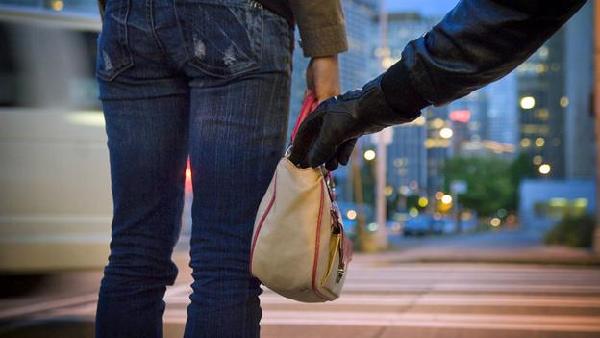|
查看原文
Pickpockets use much more than sleight of hand, says Caroline Williams, they hack your brain’s weaknesses.
My mother has eyes in the back of her head. She also taught me from an early age to be suspicious of strange men, especially when they give you presents. Which makes it all the more surprising that a “nice man” bearing flowers managed to swipe 20 euros from her purse, while she was holding it in her hands and looking straight at it.
“He said he was collecting for a church charity so I pulled out a euro,” she explains. “He said “no, no, that’s too much” and offered to look in my purse to find a smaller coin. He must have slid out the 20 euro note at the same time. I didn’t even notice until an hour later. I felt so stupid.”
But she needn’t feel bad. According to neuroscientists our brains come pretty much hard-wired to be tricked, thanks to the vagaries of our attention and perception systems. In fact, the key requirement for a successful pickpocket isn’t having nifty fingers, it’s having a working knowledge of the loopholes in our brains. Some are so good at it that researchers are working with them to get an insight into the way our minds work.
The most important of these loopholes is the fact that our brains are not set up to multi-task. Most of the time that is a good thing – it allows us to filter out all but the most important features of the world around us. But neuroscientist Susana Martinez-Conde, the author of the book Sleights of Mind, says that a good trickster can use it against you. She should know: as a researcher at the Laboratory of Visual Neuroscience in Arizona, she has studied how Las Vegas stage pickpocket Apollo Robbins performs his tricks.
“When Apollo gets someone on stage,” she says, “he is making them look at things, he is talking to them, he is touching their body, he is coming very close to them and producing an emotional response as he is entering their personal space… It’s complete attentional overload.”
So while sleight of hand helps, it’s as much about capturing all of somebody’s attention with other movements. Street pickpockets also use this effect to their advantage by manufacturing a situation that can’t help but overload your attention system. A classic trick is the ‘stall’, used by pickpocketing gangs all over the world. First, a ‘blocker’, walks in front of the victim (or ‘mark’) and suddenly stops so that the mark bumps into them. Another gang member will be close behind and will bump into both of them and then start a staged argument with the blocker. Amid the confusion one or both of them steal what they can and pass it to a third member of the gang, who quickly makes off with the loot.
“People think it’s about distracting someone by making them look away but it’s actually about directing the mind towards something,” says James Brown, a stage pickpocket and hypnotist based in the UK. “If I wanted you to stop looking at something on the table it’s much easier for me to give you a good reason to look at something else. If I give you two or three things to focus on and the one I want you to avoid isn’t one of them, then that’s even better because now you have the illusion of choice.”
Other tactics are more psychological. Pickpockets tend to hang out near ‘beware of pickpockets’ signs, because the first thing people do when they read it is check they still have their valuables, helpfully giving away where they are. And in my mother’s case, the thief’s best trick was not coming across like a pickpocket. “He was a very nice guy and very personable. Not someone that would cause you to suspect,” she says.
Brown thinks confidence plays a major role too. “The biggest ploys used by theatrical pickpockets and the kind of street pickpockets that will actually engage with you, is simply an incredibly alluring display of confidence,” he says.
In theory, he adds, the power of suggestion alone is enough to persuade the most streetwise person to hand over their valuables. In 2009 a Russian bank employee gave over $80,000 of cash to a woman who apparently hypnotised her. “If you’ve got a bit of rapport with somebody and they trust you, it’s easy,” says Brown.
Smart moves
On the stage, specific movements can also trick us. When Apollo Robbins started working with Martinez-Conde he told her that he had a hunch that certain ways he moved his hands seemed to affect how well he could direct a person’s attention.
If Robbins moved his hand through the air in a straight line between two points, he said, it was less effective at holding people’s attention on the end point than moving his hand in an arc motion. An arc motion would make people’s gaze stick to the curving hand and stay there, while a straight line would make their eyes flick back to the beginning and jump between the two.
Sure enough, eye tracking experiments showed that his hunch was right. But why? Martinez-Conde says that it is all down to the way different movements engage the visual system. Following an arc uses an eye movement called ‘smooth pursuit’, where the eye continuously follows an object. A straight line makes the eye move in a ‘saccade’, a fast movement where the eye moves from point A to point B in a fraction of a second.
“When we make a saccade our visual system is blind during the flight of the saccade, so you can see at the beginning and you can see at the end but while the eye is moving you cannot see,” she says. During smooth pursuit, however, there is no blind period, the eyes follow the moving object continuously from start to finish.
One explanation for why this makes us more likely to follow the hand, is that with a straight line, the eyes snap back to the beginning of the movement to try and fill in what the brain didn’t see during the movement. Whatever the explanation, it can be a very useful tool for a pickpocket. “Depending on what the pickpocket is interested in he may engage one or another type of motion, with or without engaging the person’s attention,” she says.
Dirty tricks
Of course, if you want to play with someone’s powers of perception, a good time to try would be late at night when after a few drinks everything is already a little fuzzy. Brown says he spent a particularly fascinating night observing pickpockets outside nightclubs in London’s Trafalgar Square.
“They employ some clever tactics. A classic is that a girl comes up to you outside of a club and starts talking to you and as she’s doing it she starts rocking very gently. And the person thinks they are rocking so they compensate and start rocking and fall over. And she’s very kind and she helps you up and maybe her friend helps, too. You stumble off and the next morning you realise your watch has gone and your wallet is gone, everything’s gone.”
Having said all that, Brown is keen to point out that most thefts are opportunistic. “Having spent some time with the Romanian pickpocket gangs in London Bridge, it was fascinating to see how the level of skill is far less than you think. There’s a danger that these people are portrayed as being so skilled that it becomes almost endearing and elegant. Most of these people aren’t that at all, they are mostly opportunistically thieves.”
But, he warns, they are opportunistic enough to keep up with new technology. In the not too distant future, hacking contactless debit cards could prove just as fruitful for thieves as hacking our minds.
“Rather than take your wallet and get £50-60 and run the risk of being caught, why not walk through a busy place and just tap everybody’s pocket? If you took £19.99 off everybody, which is the limit of the contactless cards, that would be a very lucrative day right there. It’s all a little bit frightening.”
Still, knowing about all these tricks can make you a little less likely to have your valuables pilfered. At the very least, Brown says, it’s an idea not to zone out too much in public. “A street thief will avoid like the plague people who are demonstrating a very open awareness of their environment. The man on the tube who is looking around, being very aware, they won’t go anywhere near,” And as my mother would no doubt remind you, it’s also an idea to keep away from strangers with flowers.
|
查看译文
据英国BBC网站报道,卡罗琳·威廉姆斯(Caroline Williams)称扒手不仅手法熟练,还熟知你大脑思维的弱点。
我母亲能感知背后发生的事情,仿佛她后脑也长了眼睛似的。从小她就教我要疑心陌生人,尤其是那些送你礼物的陌生人。所以,让我尤其吃惊的是,一个手持鲜花的“好人”能从我妈钱包里顺走20块钱,当时我妈正忙着欣赏握在自己手里的鲜花。
“他说他在为教堂慈善活动筹款,所以我掏了1欧元出来,”我母亲解释,“他说‘不不,太多了’,然后说要看看我的钱包,只要个小硬币就够了。他肯定在这时将20欧的纸币偷走。一个小时后我才发现,我太笨了。”
但她不需要感到很糟糕。神经系统科学家称因为我们的注意力和感知系统出现异常行为,而我们的大脑认知极为模式化,所以容易被骗。实际上,一个扒手要成功偷窃的关键不在于灵活的手指,而是对我们大脑漏洞的认知。有些扒手很擅长发现人的认知弱点,有些研究人员甚至与扒手合作,深入探解我们的大脑是如何工作的。
最重要的一个弱点是我们的大脑难以同时兼顾多项任务。通常这是好事——这样我们就能筛选出身边最重要的信息。神经系统学家苏珊娜·马丁内斯-康德(Susana Martinez-Conde)是《大脑诡计》(Sleights of Mind)的作者,她认为这个大脑弱点让我们容易受骗。她应该知道:作为美国亚利桑那州(Arizona)视觉神经学实验室(Laboratory of Visual Neuroscience)的研究人员,她已经研究过美国拉斯维加斯(Las Vegas)表演扒手阿波罗·罗宾斯(Apollo Robbins)的表演伎俩。
马丁内斯-康德说:“阿波罗将观众引到台上,让他们看些东西,跟他们说话,接触他们的身体,渐渐接近他们,营造某种情绪反应,让阿波罗有一种进入私人空间的感觉……就是增加一些信息而已。”
所以将一个人的全部注意力转移到其他地方,加点手上技巧就成功了。街上的扒手也会营造某种只会增加你注意力负荷的场合,通过这种方法顺利偷窃。全世界的扒手帮派都用的典型偷窃场景是“急停”。首先,一名“阻挡者”扒手走在受骗者(“目标”)前面,然后突然停下来,与“目标”撞个满怀。另一扒手同伴紧跟其后也和“阻挡者”、“目标”撞在一起,然后就开始扮演与“阻挡者”发生争执,在混乱中他们其中一个或两个偷到能摸得着的东西,然后转手交给第三个同伴,第三个同伴再快速离开现场。
“人们会觉得让他们看别处会使他们分心,实际上这会使他们的大脑分散注意力,”英国的扒手表演者和催眠师詹姆斯·布朗(James Brown)说,“如果我想让你不再看桌上的东西,给你一个理由看别处会更容易。如果我让你关注两三样东西,但不包括我不希望你关注的东西,这更好,因为这会让你产生有选择的错觉。”
其他策略的心理作用更明显。扒手喜欢在有“小心扒手”路标的地方逛,因为人们看到路标首先会检查自己的贵重物品有没有丢,于是就等于帮助了扒手,告诉他们目标在哪儿。而我母亲遇到的小偷最厉害的手段不是像一般的偶遇手段。我母亲说:“他是一个友好的小伙子,很有风度,不像那些会引人怀疑的人。”
布朗认为自信对扒手也很重要,他说:“表演扒手和与你接触的街上扒手最重要的策略是展示出富有魅力而又难以置信的自信。”
布朗补充,理论上光是暗示的力量就足以让街上最聪明的行人交出财物。2009年,一个俄罗斯银行职员被一个女人催眠,并将80,000美元的现金交给了这个女人。布朗说:“如果你对人比较和善而他们又信任你,那你就容易得手。”
巧妙的动作
在舞台上,一些特殊的动作也能欺骗我们。当阿波罗·罗宾斯与马丁内斯-康德合作时,他说他有预感,他移动手的某些方式似乎会影响他控制某个人的注意力。
罗宾斯说,如果他在空气中的两点间直线移动手,然后在某点停下,这动作控制人们注意力的效果不如在空中做弧形移动。弧形移动能使人注视弯曲的手并在移动终止点集中注意力,但直线移动会让人目光闪回起始点,并在两点间移动。
的确,目光跟踪实验证明罗宾斯的预感是对的。但为什么会这样?马丁内斯-康德说这都因为不同的动作会引起视觉系统的反应。眼睛跟随弧形移动的滑动叫“平滑移视”(smooth pursuit),此时眼睛持续盯着一个物体。直线移动让眼睛处在“眼扫视”(saccade)状态,眼球瞬间在A点和B点间快速移动。
马丁内斯-康德说:“当眼睛在快速扫视时,我们的视觉系统是瞎的状态,所以你在移动的起点和终点都能看得见,眼睛移动时却看不见。”然而在平滑移视中没有看不见的时刻,随着物体从运动开始至结束,眼球持续移动。
对于为什么眼睛更容易跟着手动,一个解释是手在直线移动结束后,眼球会返回起始点,尝试补回刚才大脑看不见的移动轨迹。不管是什么原因,这对扒手来说都是有用的手段。马丁内斯-康德说:“扒手会根据自己感兴趣的东西而做一些其他动作,以影响或不影响对方的注意力。”
卑鄙把戏
当然,如果你想和别人玩弄一下感知力量,对方深夜喝了几杯对一切感觉迷迷糊糊时是尝试的好时机。布朗说他曾在一个特别美好的夜晚在伦敦特拉法加广场(Trafalgar Square)的酒吧外观察扒手。
布朗说:“他们会用些聪明的策略。有一个很典型的策略。酒吧外一个女孩向你走来,开始和你交谈,并开始慢慢摇晃你。你会觉得自己在摇晃,想保持平衡,也开始摇晃起来,然后就跌到。那个女孩好心来扶你,或者她的朋友也会帮忙。最后你跌跌撞撞倒下,第二天早上发现手表不见了,钱包不见了,所有东西都不翼而飞。”
布朗说了这么多,是想指出多数偷窃都是投机的。他说:“我在伦敦塔桥观察罗马尼亚扒手帮很久了,他们的技巧其实没有你想的那么厉害,我挺吃惊的。这些人被描述得那么厉害,甚至让人觉得可爱优雅,这挺危险的。这些扒手大多数都不是这样的,他们大多是投机取巧的小偷。”
但是布朗提醒我们这些扒手伺机而动,也会使用最新的科技。在不久的将来,偷取无接触式借记卡对小偷来说与入侵我们大脑思维一样有成效。
布朗称:“偷走钱包,拿走五六十英镑,还要冒着被捉的风险,与之相比,为什么不走进熙攘的地方拍拍每个人的口袋?如果从每个人身上拿走19.99镑——这是无接触式借记卡的上限,这样一天在那儿就能挣不少。这些听起来都让人有点害怕。”
但了解一下所有这些偷窃手段能让你被偷贵重物品的几率降低一些。布朗说,至少要知道在公众场合尽量不要分神,“街上的小偷会像躲瘟疫一样躲开那些对四周保持警觉的人。地铁里四处张望的人,扒手是不会靠近的。”我母亲的案例无疑也会提醒你注意与拿着花的陌生人保持距离。
(译者 lunachiao 编辑 丹妮)
扫一扫,关注微博微信
 
|


